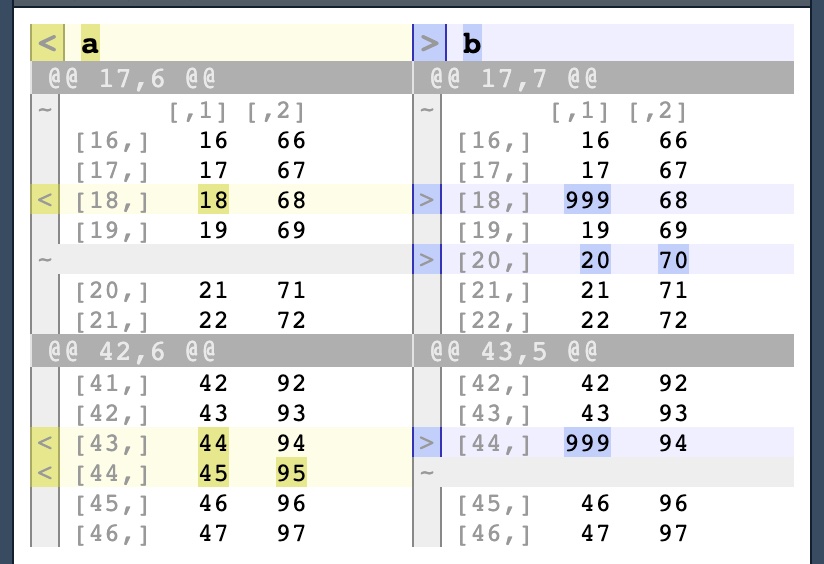What’s the difference between two dfs?
diffobj::diffPrint() gives a handy visual way to check differences:
< a > b
@@ 17,6 @@ @@ 17,7 @@
~ [,1] [,2] ~ [,1] [,2]
[16,] 16 66 [16,] 16 66
[17,] 17 67 [17,] 17 67
< [18,] 18 68 > [18,] 999 68
[19,] 19 69 [19,] 19 69
~ > [20,] 20 70
[20,] 21 71 [21,] 21 71
[21,] 22 72 [22,] 22 72
@@ 42,6 @@ @@ 43,5 @@
[41,] 42 92 [42,] 42 92
[42,] 43 93 [43,] 43 93
< [43,] 44 94 > [44,] 999 94
< [44,] 45 95 ~
[45,] 46 96 [45,] 46 96
[46,] 47 97 [46,] 47 97
(In RStudio, this is shown in a colorful manner in the Viewer)

This also works for other types of objects, such as character vectors:
< letters[1:3] > c("a", "B", "..
@@ 1 @@ @@ 1 @@
< [1] "a" "b" "c" > [1] "a" "B" "c"
For more details, see the Introduction to diffobjj vignette, or the diffobj github rep.
